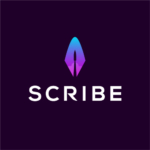Do you want to be known as THE expert in your niche?
- The zen master of real estate agents?
- The mindstate marketing guru?
- The goat whisperer?
Your book is the first step on that path. It makes you an instant expert in your field. But it doesn’t make you THE expert—not by itself.
For that, you need an Author ecosystem.
But what’s an Author ecosystem? It’s everything you need to go from Author to complete online brand.
And being known as a branded expert in your specific niche is a great way to help you achieve your business goals.
This post will show you how to build your own Author ecosystem: a complete online package that positions you as THE go-to person in your field.
What Is an Author Ecosystem (And What Can It Do for You)?
Your Author ecosystem starts with a website, but it’s much more than that. It represents you as an Author—along with all the different products and services you sell.
To really get people into your ecosystem, you don’t want them just to go look at your website. You want them to interact with you.
To make that happen, you’ll need to put a lot of different pieces into your ecosystem. This is especially true for a first-time Author who’s basically starting from scratch—at least from a marketing standpoint.
An Author ecosystem includes:
- Your Author branding and positioning
- A website that reflects your brand
- A compelling “opt-in” to build your email list
- A branded email newsletter
- Branded profiles on your LinkedIn page and other social media
- A branded email signature
And those pieces all have to work together. No matter where your audience finds you, at every marketing touchpoint, you need to reinforce your brand with consistent, powerful, and effective messaging.
From your website forms and opt-ins to your email newsletter to your social media platforms, you always need to be the zen master of real estate agents—or whatever your personal brand happens to be.
Maybe you wrote your book as a stepping stone to becoming a professional speaker. The right ecosystem will help you use your book to get speaking engagements.
Maybe you wrote your book to attract new business clients. Your ecosystem can help you do that too.
It positions you as THE expert around the ideas of your book, which is hugely beneficial if you want to:
- Build your authority
- Offer new products or services
- Attract bigger clients
- Change careers
- Become an inspirational speaker
- Gain media attention
- And so much more
When you might only need a website
If you just want to focus on your book, then all you really need is a landing page. The one-page website for Greedy Bastards is a great example.
There’s no newsletter signup. There aren’t any splashy images of the Author speaking to huge crowds. It’s just a place for people to go to learn more about the book.
If you’re not trying to brand yourself, sell other products, drive clients to your business, or build authority and credibility, that’s likely all you need.
When you want an Author ecosystem
On the other hand, if a big part of your goal is becoming the go-to person in your niche, an Author ecosystem can do that.
It drives the overall marketing and business goals you wrote your book to achieve.
How to Build an Author Ecosystem
1. Get crystal clear on your ultimate goal
Like everything else in marketing, your ideal ecosystem comes down to your ultimate goal:
- why you wrote your book, and
- what you want to accomplish with it
You can’t build your ecosystem until you’re crystal-clear on what that goal is and what your brand needs to be in order to achieve it.
What’s the difference between your goal and your brand? I’ll give you an example.
If you wrote your book to get more real estate clients, that’s your goal: to get more clients. Your brand is how you’ll position yourself in order to get them.
You could be:
- The zen master of real estate agents
- The forever-home real estate agent
- The landscape lighting expert of real estate sales
The more niche your brand, the easier it is to position yourself as the very best in your field.
2. Design your Author brand
Before you can build your ecosystem, you have to figure out your Author brand. Hopefully, you started figuring that out before you wrote your book.
To hone your brand even more, ask yourself:
- What problem am I solving?
- For what audience?
- How do I approach that problem?
- What’s my reputation (or what do I want it to be)?
- How would my best client describe me to someone else?
That last one is especially important when it comes to high-competition fields like real estate. Are you the fastest? The most efficient? The friendliest?
Your brand positioning needs to make you stand out from everyone else.
Branding is more than figuring out what you offer. It’s also things like how you dress, your personality, and your reputation.

It’s about the colors and fonts of your website. The tone, voice, and frequency of your newsletter—all the external trappings that form the perfect mesh of your authentic self with your ultimate goal.
3. Design your website
Now that you’ve figured out your branding, it’s time to incorporate it into your new website. This is your opportunity to market yourself.
Your website is just one piece of your Author ecosystem, but it’s an extremely important one. We recommend that the first thing people see on your site is you with your book and a tagline you’ve created to represent your brand.
Why? Because whether they found you from the back of your book, or from an Amazon listing, or by Googling your name, your website should assure them that they’re in the right place. It should convey your brand immediately.
For example, if you’re the zen master of real estate agents, your website should reflect that.
- Your Author photo should project a feeling of calmness
- Your tagline should represent your zen-real-estate brand
- The colors and typography should be the same as your book
When everything works together, your book cover should be a perfect reflection of your brand. Thus, your website will also be well-branded by matching it.
If your book cover doesn’t represent your brand, change it. It’s far better to release a new edition of your book than to brand yourself the wrong way.
4. Create your opt-ins
If you want people to enter your ecosystem, you need to give them a good reason to do it. Your website opt-in is your opportunity to encourage people to join your email list. For the “zen master of real estate agents,” that might be:
- A short e-book on making your home feel more zen-like
- A digital collection of “zen home” Zoom backgrounds
- The promise of ten quick tips to turn any backyard into a zen garden
- A photo gallery of zen-like home office space ideas
You’ll have to figure out the right opt-in that connects your audience with your brand. The idea is to ask people to enter their email into a form on your website in order to get access to whatever opt-in you’ve promised.
But it should never feel like a trade. People shouldn’t feel like they’re being forced to “give up” their email address. They should be excited to connect with your brand.
The right opt-in content:
- Provides value to your best potential customers
- Fits your personal brand and positioning
- Keeps you front-of-mind for your core audience
That content might be delivered as downloads on the website, as an attachment or link in an email, or even as information or articles provided by the newsletter itself.
Once someone has joined your email list, you’ll need to keep sharing great content with them through your newsletter to maintain and encourage that connection.
The longer someone feels connected with you, the more likely they are to move toward your ultimate goal—whether that’s becoming your client, taking your master course, or anything else you wrote your book to achieve.
5. Create your newsletter
Now that you’ve created an opt-in to get people into your ecosystem, it’s time to create the email newsletter they’ll receive once they’ve signed up.
Sticking with our Zen master of real estate example, that might be the short e-book describing how to make your home feel more zen-like. But it doesn’t have to stop there.

You can also create a drip sequence—a series of emails they’ll receive automatically over the coming months.
But whether or not you build a specific welcome series, any time you have something to share with your audience, you’ll have your newsletter at the ready to let everyone know.
Creating your newsletter is a project in itself. It involves quite a few steps, and each one takes some real planning:
- Create an account on MailChimp
- Connect that account to your website through branded opt-in forms
- Design your newsletter template
- Create an automated welcome series for new signups
- Decide on the right frequency for your newsletter sends
- Develop your newsletter content
- Set up that content to go out automatically according to your calendar
To learn more, read our full posts on setting up your Author newsletter and building your email list.
6. Create the rest of your brand assets
I can’t stress enough how important it is for everything you do to reflect your brand—consistently and intentionally. That includes:
- Your email signature
- Your business cards
- Your LinkedIn profile and content
- Your social media profiles and content
- Your book cover
Everything. No matter where or how people are interacting with you or your content, you should always come across as the zen master of real estate agents—or whatever your own brand is.
The more tightly you’re associated with your niche (and tagline), the more likely people are to:
- Remember you
- Recommend you to others
- Sign up for your newsletter
- Continually read your newsletter content, keeping you front-of-mind
- Share your content on social media
And the more all these things happen, the higher you’ll rank on Google with your website, social media platforms, LinkedIn profile, etc. — until, eventually, people will search for “zen real estate agent” and find you at the top of that search list.
Examples of Great Author Ecosystems
Poppy Crum
“In a world where our attention is capacity limited, and possibly our most valuable commodity, empathetic technologies can help us connect with each other and ourselves in the most human ways.” www.poppycrum.com
Dr. Nashater Solheim
“In The Leadership PIN® Code, Dr. Nashater Deu Solheim shares a unique and proven framework for creating the impact and influence you need in your daily work. You’ll learn how to use three simple keys to get what you need from every interaction—while also maintaining positive relationships.” www.nashaterdeusolheim.com
Michael W. Lynch
“Has your personal finance plan become so complex, you can’t even understand it? … In Keep It Simple, Make It Big, award-winning financial planner, Michael Lynch, uses his nearly twenty years of practical experience to help you create, protect, and enjoy financial success.” www.simpleandbig.com
Jeremy Bodenhamer
“If you sell physical products, warehousing and shipping costs can make or break your business. But most companies treat order fulfillment like an afterthought, running headlong toward a future in which they won’t be able to compete. … Whether you’re an e-commerce executive, retailer, manufacturer, or distributor, pick up Adapt or Die to learn how small to mid-sized businesses are taking on the 5 giants of the e-commerce industry—and winning.” www.jeremybodenhamer.com


